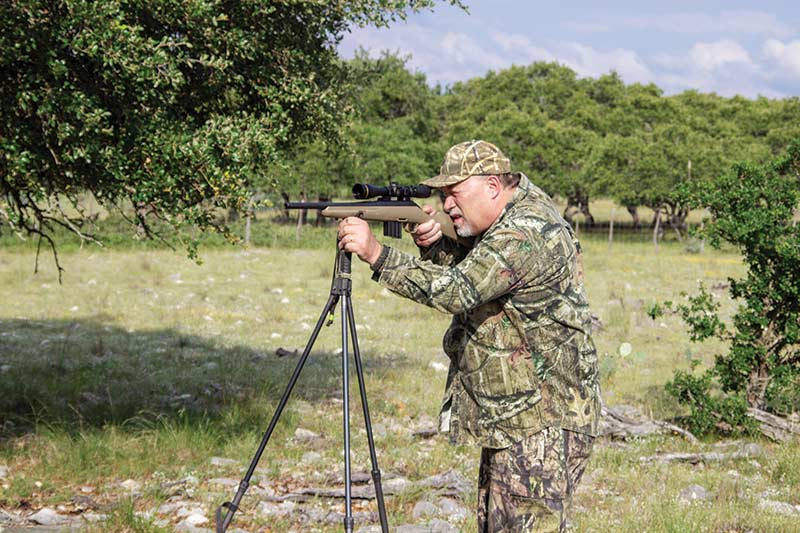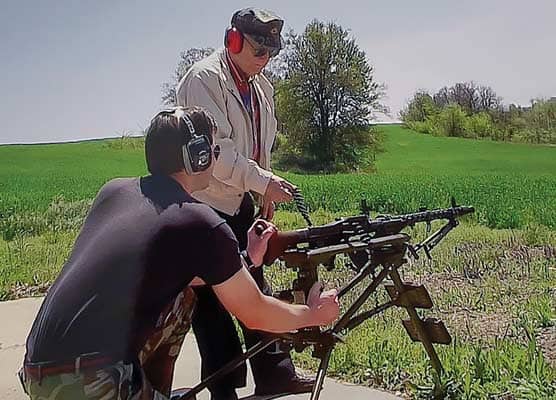Field Shooting Tips
Five Common Mistakes Hunters Make
Being a hunter and a guide, I’ve seen a lot of mistakes during my 45 years of being in the field. Some mistakes couldn’t be avoided, but there are several I’ve seen being made time and time again. So, here are five tips to keep your hunting experience enjoyable:
1) Be Ethical. Most hunters really believe they’re ethical hunters. They don’t poach or mistreat the land, but being ethical is also making the shot. Missed shots or bad shots are caused by the distance being greater than the hunter’s skill level. An ethical shot is a shot you can make 100% of the time with a 100% hit rate. Don’t try the 500- or 600-yard shot because you’re worried it will get away. The worst that can happen if you don’t take the shot is the animal is out there to hunt another day and it has not run off wounded.
2) Focus On Shot Placement. Many hunters tend to look at the animal to see where they want the bullet to impact. The reality is you need to transition your focus from where you want the shot placed back to the reticle or front sight. Focus on the sighting system, not the target, and the shot will be where you want.
3) Anticipation. Did you make the hit or did you pick your head up to see the animal as soon as you pressed the trigger? If you look over the optic, your body will pull the gun down and this will normally result in a low shot as you are actually moving the gun before the shot has left the muzzle.
I see a lot of anticipation of recoil. This is where everything is lined up just right and we think it’s going to hurt, so we tell the trigger to “go now.” This is also commonly known as “mashing” or “jerking” the trigger.
Then, there’s trying to time the shot. This is where the sights or optic are moving around a bit. Hunters will quite often try to time the movement, which results in the shooter attempting to “tell” the gun to go off at a certain time. This usually causes bad results on the target end.
To curb anticipation, you should realize all of these factors are going to be there, so just accept them and learn to control them. Hold still and focus on the reticle or sight, press the trigger and follow-through. You should be able to watch your animal fall through the sights or optic.
4) See The Angles. Proper shot angle is often forgotten with the excitement of stalking an animal. Most animals will not be perfectly broadside to you. I’ve often seen animals significantly quartered away but the hunter will hold on the vitals as if it were broadside. In reality, learn where to hold to get into the vital zone. If your animal is angled away and you hold for the center of the vitals, you may miss the kill zone and end up with a wounded animal. To make a good vital shot on a quartering target, you need to hold behind the vitals to get the shot placement in the center.
5) Sight In Today. You sight in your gun, go hunt for the season, then put it away. Then the next hunt comes around and you keep missing shots. Why? What’s changed? Probably the ammo. You used a certain type one year and then the next time you used something else. You may have found the same grain bullet but, it’s a completely different brand. We assume it will be close enough. Well, close enough is not good enough out in the field. Check your zeros before going out in the field. This includes a borrowed gun. If someone else sights it in, it may only be zeroed for the person using it.
Bonus Tip: Slow Down. Yes, it’s exciting when you spot the animal you want but excitement can get the best of us. The urge to hurry and get into position before it leaves overtakes us. But this causes extra noise and faster movement the animal will detect. Stay calm, move slow and easy and pick a location to your advantage. Look for things like trees, rocks or downed logs, not just to hide behind but also to use as shooting aids. This thought process will not only mask your presence, but now you’re using Mother Nature to help with the perfect shot.
Lack of knowledge is what causes an unpleasant hunting experience. If you are not sure what to do, ask someone to go with you who knows, spend some time reading about it and/or take a training course. Gunsite holds a Hunter Prep class right before the season opens. Take the time to learn what’s right and wrong. Don’t let poor habits waste an animal that might feed your family and give you some of the best memories of your life.







